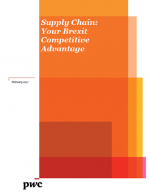Supply Chain Planning Components for Private Label Success
This paper looks at what private label manufacturers can do to become more effective and organized to effectively compete with, more often than not, larger national brand manufacturers.
Private label manufacturing has evolved into a demanding discipline characterized by high service levels, thin margins, large SKU counts and little room for error. While it does require the utmost efficiency and productivity, for those manufacturers who can master the art of customer collaboration and the science of demand planning, inventory optimization and production planning, private label is a rewarding business (retailers generally see 8%—10% higher margins than for name brands) that continues to grow year over year.
The advantage to retailers with store brands has been well understood for years (differentiation, customer satisfaction, brand loyalty, better margins and value). By now, most consumers have tried private label products and realize that an industry-wide shift has happened. Consumers now perceive that private label products deliver as good or better quality as national brands at more affordable prices.
Private label goods are usually priced 20% or more below the market leader, and Private Label Manufacturing Association research reveals that American shoppers consistently save about 35% off their grocery bills by choosing store brands over national brands—chalking up some $32 billion in annual savings.
From packaged foods in the grocery aisle to fashion-forward apparel labels and furniture, private label products are not only here to stay, they are positioned to prevail. In fact, even Amazon has jumped into private label products in a big way with several private fashion and furniture label brands.
For the manufacturer this opportunity comes with a big challenge: more total SKUs, with lower production volume per SKU, is a recipe for inefficiency, inaccuracy and expensive, reactive decision-making. Maintaining service levels on brands that directly shape a retailer’s core reputation requires the crucial disciplines of demand planning, inventory optimization, manufacturing planning and replenishment planning (perhaps with vendor-managed inventory) and the ability to balance and align supply to fluctuating demand across multiple time horizons.
What’s Related




Favorites





